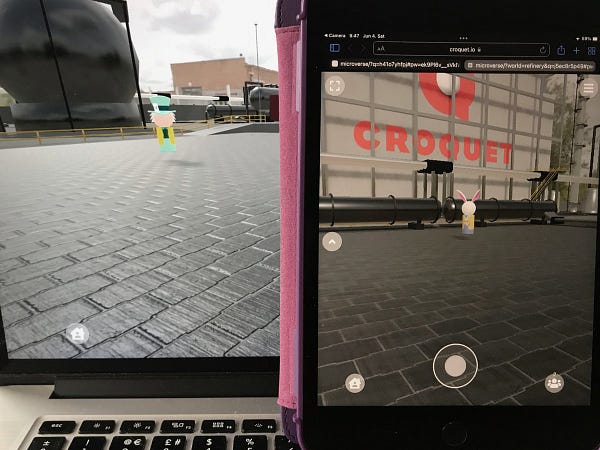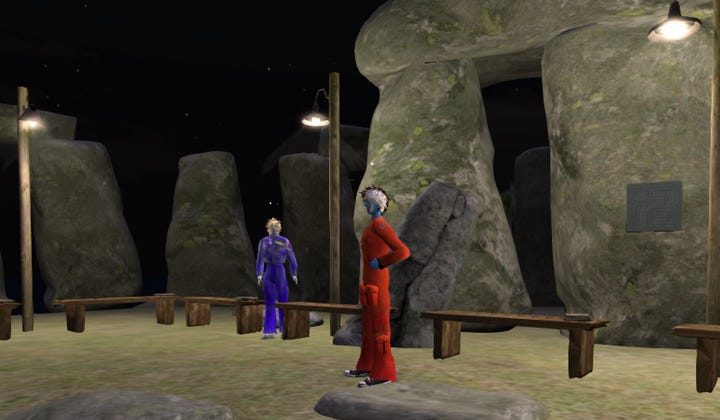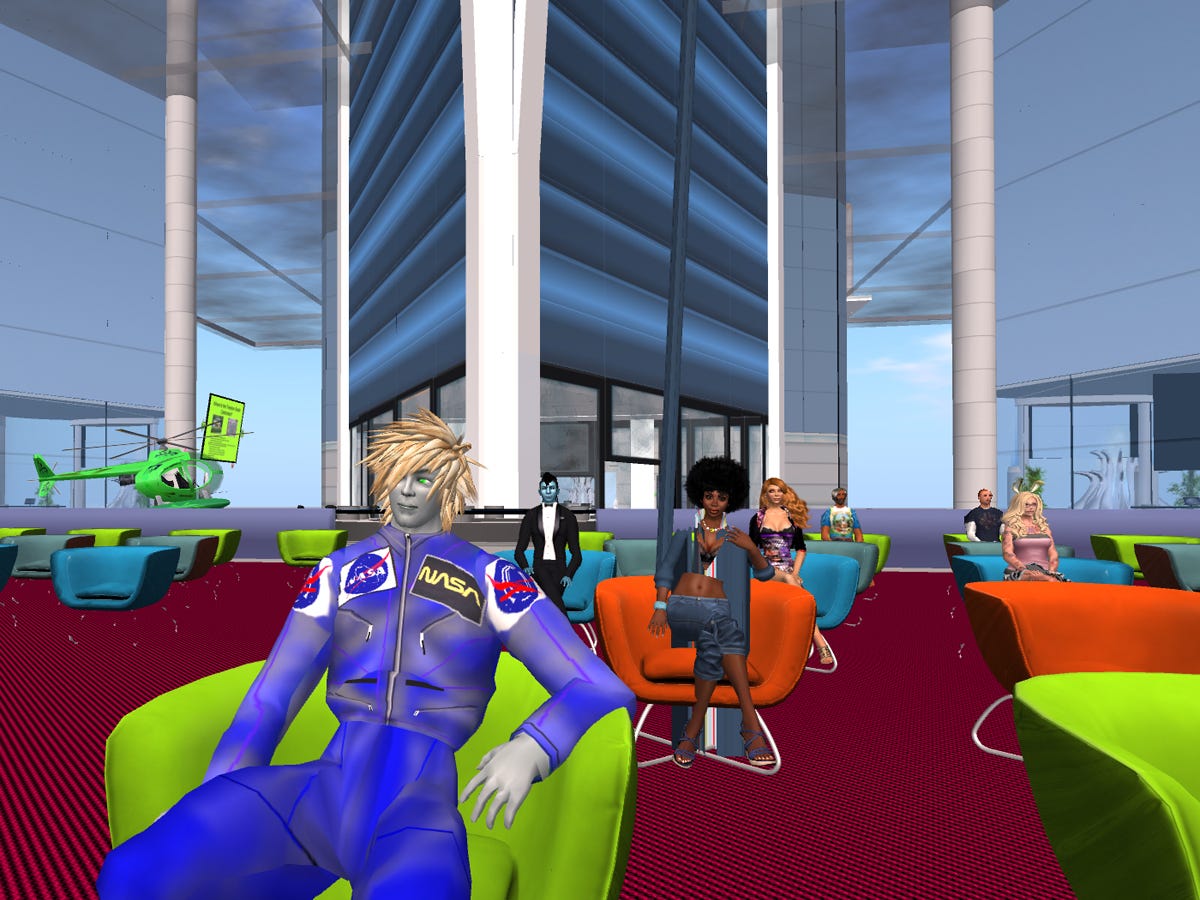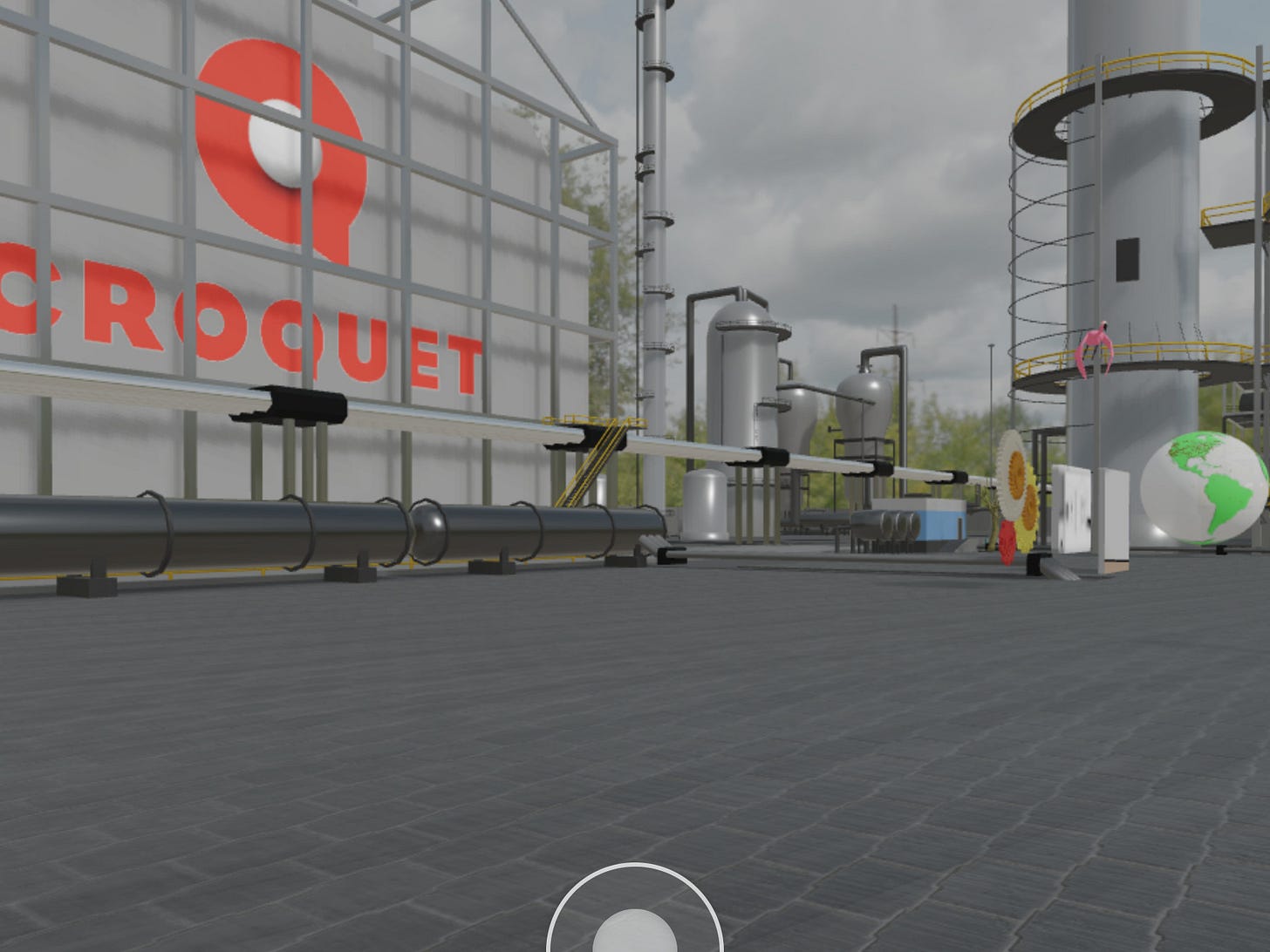Croquet Microverse: big news for Metaverse enthusiasts
Toward a next-generation decentralized, distributed, high-tech Metaverse.
Greetings to all readers and subscribers, and special greetings to the paid subscribers!
Please scroll down for the main topic of this newsletter. But first, you are invited to attend the Terasem Space Day Colloquium on July 20, from 10am ET to 1pm ET, via Zoom.


I look forward to seeing you on July 20 at the Terasem Space Day! See previous newsletters for more info about the speakers.
The old Turing Church website turingchurch.net (hosted by Medium) is in maintenance-only mode, and turingchurch.com (this website hosted by Substack) is now the main Turing Church website.
Why? Because I like Substack more than Medium. Medium has an awkward business model (and now also an awkward layout) designed to encourage readers to subscribe to Medium. Of course there’s nothing wrong with this, but independent writers like me have other interests.
Substack is different. I like its minimalist design that is not cluttered by links to other Substack newsletters. Substack’s business model is very simple and crystal clear: if a writer chooses to charge a subscription fee, they take a reasonable cut.
I’m persuaded that the overabundance of “free” (nothing is free, you know) online content has done more harm than good, and I kind of regret the old days where we PAID for newspapers. Ad-supported “free” content encourages bad things like misleading headlines and fake news.
So I support Substack and Substack writers, and I encourage you to do the same. There are many newsletter that you can subscribe to (including this one ;-).
One problem is that the minimum Substack fees ($5/month or $30/year) are perhaps too high. I guess this is due to the overhead cost of micropayments, but I guess they could introduce subscriptions to bundles of newsletter at reduced cost (e.g. $5/month for 5 newsletters).
Let’s come to the big news for Metaverse enthusiasts.
I have been active in the Virtual Reality (VR) Metaverse for more than two decades. In the mid/late 2000s I participated in the development of virtual worlds, including the Terasem island in Second Life. Until a few years ago the Terasem island in Second Life was used for Turing Church events (pictures below).
The Terasem island in Second Life was also used for Terasem events like the upcoming Space Day Colloquium, which now use Zoom.
Why did we give op on virtual worlds? We didn’t - we just gave up on Second Life. But we’re actively following Metaverse developments and hope to jump in again one day when the time is right.
In “Dawn of the New Everything: Encounters with Reality and Virtual Reality” (2017), VR pioneer Jaron Lanier says:
“VR is hard to do well even in a lab, and there’s still a lot to learn about how to make great VR products. Be patient… Just because it takes a while to figure a technology out, that doesn’t mean the world has rejected it…. Maybe VR will be huge, huge, huge...”
VR headsets and interface gear could make the Metaverse huge, but the adoption of these devices has been slow. However, I can do without VR gear - I find on-screen virtual worlds perfectly fine at this moment. Of course I will get VR interfaces for more immersive VR experiences when the time is right, but I don’t mind waiting.
I think the VR Metaverse will take off with distributed, decentralized, open, browser-based, operator-owned, linked virtual worlds that run on all desktop, mobile and VR devices.
My friends Alejandro Sacristán y Carlos Peña have recently published a review (in Spanish) of our old adventures in the Metaverse.
The “productivity-oriented metaverse Qwaq Forums” that they mention is now called Virtend and remains, I think, a great low-footprint, no-frills implementation of the Metaverse. At the same time, it is part of a legendary software project called Croquet.
I have been following the Croquet folks for a while, and now they are starting to deliver a metaverse operating system and a developer toolkit called Microverse.


The picture in the tweet shows my simulation of a multiuser Microverse session on a Mac and an iPad. Microverse, running on Croquet, is minimalist and very simple, a baby step in the Metaverse. But I see a plausible future: distributed, decentralized, open, browser-based, operator-owned, linked virtual worlds that run on all desktop, mobile and VR devices.
This is seriously awesome. Will Croquet make the VR Metaverse huge? Only time can tell (Croquet needs a couple more years to mature I think, and so does the whole sector), but the project is worth watching closely. Meanwhile, Croquet has been named a winner of the AWE (Augmented World Expo) 2022 Auggie Awards at Santa Clara, CA in the Startup to Watch category.







Yeah, this metaverse thing is gonna change the future really soon. https://silicophilic.com/